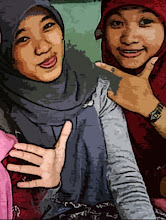No. | Besaran Pokok | Satuan SI | Simbol Satuan | Definisi |
1. | Panjang | Meter | m | Satu meter adalah jarak tempuh cahaya dalam vakum dengan waktu 1/299.792.458 sekon |
2. | Massa | Kilogram | kg | Satu kilogram adalah massa kilogram standar berupa silinder platina-iridium yang aslinya disimpan di Sevres, Paris |
3. | Waktu | Sekon | s | Satuan sekon adalah waktu yang digunakan oleh atom cesium-133 untuk bergetar sebanyak 9.192.631.770 kali |
4. | Temperatur | Kelvin | K | Satu kelvin adalah 1/273,16 kali suhu termodinaika titik tripel air Note: Suhu termodinamika titik tripel air adalah 273,16 K. Titik tripel air adalah suhu dimana air murni berada dalam keadaan seimbang dengan es dan uap jenuhnya. |
5. | Jumlah Zat | Mole | mol | Satu mol adalah jumlah zat yang mengandung unsur elementer zat tersebut sebanyak jumlah atom karbon dalam 0,012 kg karbon-12 |
6. | Kuat Arus Listrik | Ampere | A | |
7. | Intensitas Cahaya | candela | Cd | Satu candela adalah intensitas cahaya suatu sumber cahaya yang memancarkan radiasi monokromatik pada frekuensi 540x1012 Hz dengan intensitas sebesar 1/683 watt per steradian dalam arah tersebut |
Satuan SI dan Definisi
Virus
 2.Tail Fiber > this fiber will stuck in the cell when attacked. The virus’ tail is covered with capsid (protein coat) containing protein.
2.Tail Fiber > this fiber will stuck in the cell when attacked. The virus’ tail is covered with capsid (protein coat) containing protein.# bberapa soal ttg virus n jawaban http://id.answers.yahoo.com/question/index?qid=20100814055933AAFMybS
Plant Movement
Monocotyl and Dicotyl
Difference | Monocotyledon | Dicotyledon |
Root system | Fibrous | Aerial |
Boundary of root end with calyptra | Clear | Not clear |
Pericycle | It’s consist of severel cell layer of thick wall | It is consist of one cell layer of thick wall |
Location of tranportation bundle | Xylem and phloem alternatingly | Has collateral property, phloem is outside, xylem is inside |
Medulla | Exist | Not exist |
Cambium | Not exist | Exist |
Difference | Monocotyledon | Dicotyledon |
Location of transport bundle | Regular | Spreading |
Cambium | Exist | Not exist |
Growth | Enlengthen and enlargement | Enlengthen, limited, enlargement |
MUSCLE
Joint
pembuluh darah
1. Pembuluh darah arteri atau nadi
Pembuluh darah arteri adalah pembuluh darah yang berasal dari bilik jantung yang berdinding tebal dan kaku.
- Pembuluh arteri yang datang dari bilik sebelah kiri dinamakan aorta yang tugasnya mengangkut oksigen untuk disebar ke seluruh tubuh.
- Pembuluh arteri yang asalnya dari bilik kanan disebut sebagai pembuluh pulmonalis yang betugas membawa darah yang terkontaminasi karbon dioksida dari setiap bagian tubuh menuju ke paru-paru.
2. Pembuluh darah vena atau balik
Pembuluh darah vena adalah pembuluh darah yang datang menuju serambi jantung yang bersifat tipis dan elastis.
- Pembuluh vena kava anterior adalah pembuluh balik yang berasal dari bagian atas tubuh.
- Pembuluh vena kava pulmonalis adalah pembuluh balik yang berasal dari bagian bawah tubuh.
3. Pembuluh darah kapiler
pembuluh darah kapiler adalah ujung yang berada di paling akhir dari pembuluh arteri. Jaringan pembuluh darah kapiler membentuk suatu anyaman rumit di mana setiap mili meter dari suatu jaringan memiliki kurang lebih sekitar 2000 kapiler darah.







